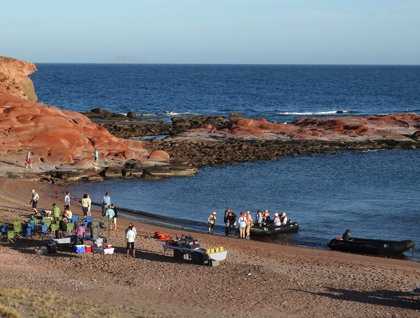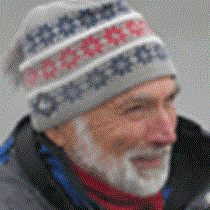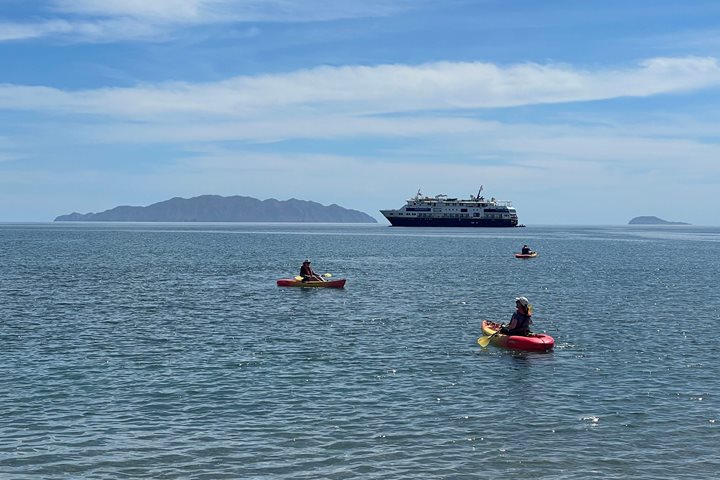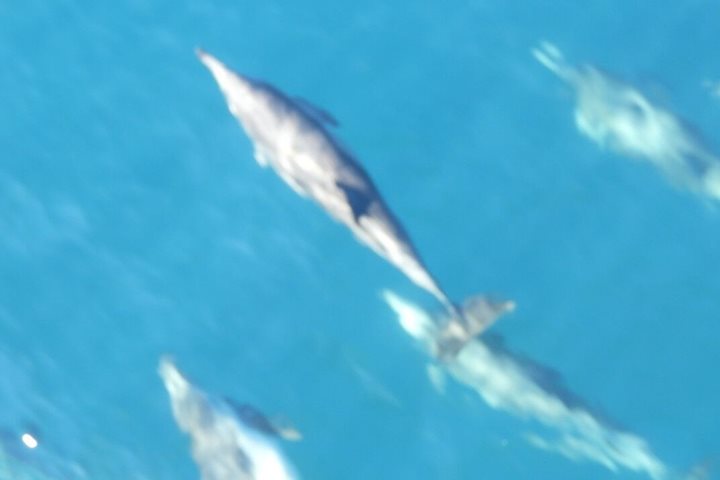We started our day in the San Jose Channel with clear skies and calm seas. The brush-like strokes of red from wispy clouds at sunrise illuminated Isla San Francisco to the east as we cruised north. About 40 to 50 long-beaked common dolphins rolled through the small waves nearby. A few turned towards us and soon appeared on the pressure wave of the bow as it cut through the water. If dolphins position themselves in exactly the right spot and bend their flukes downward they can be pushed along at the ship’s speed while putting out very little effort. The water was clear, so by hanging our heads over the rail we could see and photograph the incredibly hydrodynamic shape that serves these beautiful animals so well.
We anchored after breakfast, and the officers of the National Geographic Sea Bird soon had our beach landing crafts on their way to the shoreline of Isla San Jose. As the morning passed, some hiked to the top of a high ridge for views while others made their way up an arroyo and passed mesquite, ironwood, palo verde, and palo blanco trees. Purple flowers of Mariola, Rama Parda, and desert lavender were blooming while large, black carpenter bees buzzed nearby. The beach stretched out in either direction and enticed some to stroll along on their own. Others joined a photo instructor led group and worked on techniques to improve their craft.
After traveling for several hours in the afternoon, we turned into a cove of red sandstone with a curving sandy shoreline. This peninsular location is secluded, because the main highway down Baja California turns westward to avoid the craggy mountains of the Sierra Giganta, leaving no access here. It has the unexplainable name of Puerto Gato. It’s not a port nor are there any cats nearby. Our inflatable boats took everyone to a beach where they had the choice of kayaking within the cove, snorkeling along a rocky shoreline, or strolling up a sandy arroyo. There was time to do all three, and even include a quarter-mile walk to a place of uplifted reddish sandstone. These flapjack layers had been deeply eroded into finger and knuckle-like forms, perfect for walking on and exploring.
Later in the afternoon, the galley crew set up a delicious dinner at the base of the sandstone. The backdrop was filled by a series of silhouettes, each higher than the previous one, finally ending at the ridge of the peninsula. As the sun set, rays of light radiated out from the crest. The scene was so spectacular that photographers seemed to take hundreds of images, at least in total. Once the sunbeams were gone, firelight flickered in the faces of those gathered around the bonfire in a semicircle. Our expedition leader and one of the naturalists told stories and helped us understand the history of this great area. Stars peaked out from a partial overcast of thin clouds as our day ended.









